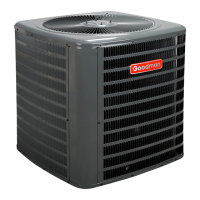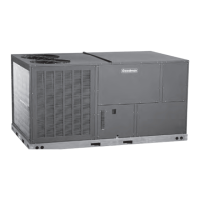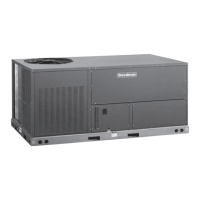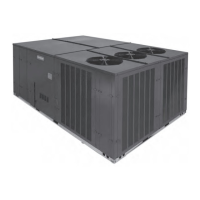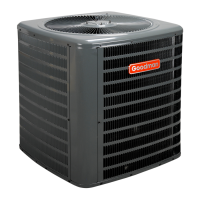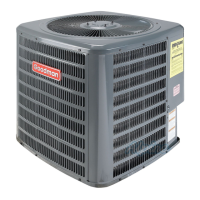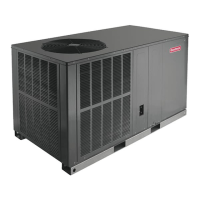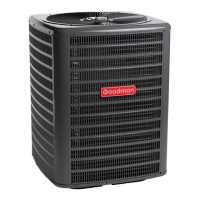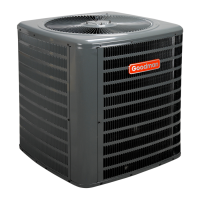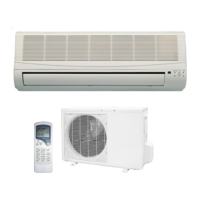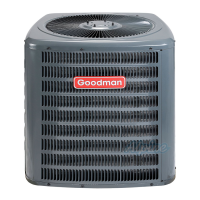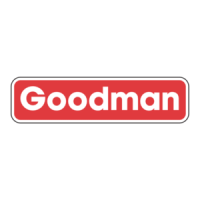Important Safety Instructions
The following symbols and labels are used throughout this
manual to indicate immediate or potential safety hazards. It is
the owner’s and installer’s responsibility to read and comply
with all safety information and instructions accompanying these
symbols. Failure to heed safety information increases the risk
of personal injury, property damage, and/or product damage.
HIGH VOLTAGE!
Disconnect ALL power before servicing.
Multiple power sources may be present.
Failure to do so may cause property damage,
personal injury or death.
WARNING
ONLY individuals meeting the requirements of an
“Entry Level Technician”, at a minimum, as specified
by the Air Conditioning, Heating and Refrigeration
Institute (AHRI) may use this information. Attempting
to install or repair this unit without such background
may result in product damage, personal injury,
or death.
Shipping Inspection
Always keep the unit upright; laying the unit on its side or top
may cause equipment damage. Shipping damage, and subse-
quent investigation is the responsibility of the carrier. Verify
the model number, specifications, electrical characteristics,
and accessories are correct prior to installation. The distribu-
tor or manufacturer will not accept claims from dealers for trans-
portation damage or installation of incorrectly shipped units.
CONDENSING AC UNIT
3-PHASE 7.5 & 10 TON AIR CONDITIONER
INSTALLATION & SERVICE REFERENCE
© 2010 Goodman Manufacturing Company, L.P.
5151 San Felipe, Suite 500, Houston, TX 77056
www.goodmanmfg.com -or- www.amana-hac.com
P/N: IO-404 Date: November 2010
Codes & Regulations
This product is designed and manufactured to comply with
national codes. Installation in accordance with such codes and/
or prevailing local codes/regulations is the responsibility of the
installer. The manufacturer assumes no responsibility for equip-
ment installed in violation of any codes or regulations.
The United States Environmental Protection Agency (EPA)
has issued various regulations regarding the introduc-
tion and disposal of refrigerants. Failure to follow these
regulations may harm the environment and can lead to
the imposition of substantial fines. Should you have any
questions please contact the local office of the EPA.
If replacing a condensing unit or air handler, the system must
be manufacturer approved and Air Conditioning, Heating and
Refrigeration Institute (AHRI) matched.
Refer to the unit Specification Sheet for the recommended in-
door model selection. NOTE: This unit must be used with a
purchased single stage room thermostat with 24 VAC control
circuitry.
Do not operate the unit in a structure that is not complete
(either as part of new construction or renovation). Such opera-
tion will void the warranty.
Installation Clearances
This unit is designed for outdoor installations only. Special
consideration must be given to location of the condensing unit(s)
in regard to structures, obstructions, other units, and any/all
other factors that may interfere with air circulation. Where
possible, the top of the unit should be completely unobstructed;
however, if vertical conditions require placement beneath an
obstruction there should be a minimum of 60 inches be-
tween the top of the unit and the obstruction(s). The speci-
fied dimensions meet requirements for air circulation only.
Consult all appropriate regulatory codes prior to determining
final clearances.
NOTICE
THIS UNIT IS SHIPPED WITH A NITROGEN/HELIUM HOLDING CHARGE ONLY. UNIT
MUST BE EVACUATED AND CHARGED PER INSTALLATION INSTRUCTIONS WITH
REFRIGERANT LISTED ON SERIAL RATING PLATE.
UNITS SHIPPED WITH A HOLDING CHARGE ARE INTENDED FOR COMPONENT
REPLACEMENT ONLY ON EXISTING SYSTEMS, AND NOT INTENDED FOR USE IN
NEW SYSTEMS OR NEWLY CONSTRUCTED HOMES.
NOTICE
NOTICE
UNITS MUST ONLY BE USED AS REPLACEMENT COMPONENTS FOR PRE-2010
INSTALLED SYSTEMS.
